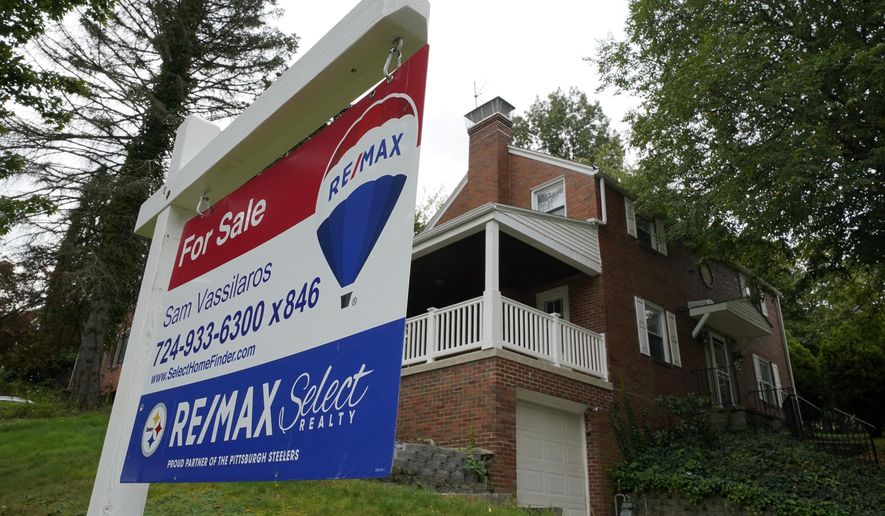High inflation and rising interest rates are creating one of the worst housing markets since the 2008 crash, presenting another hurdle to President Biden’s anticipated recovery in a sector that accounts for nearly one-fifth of the economy.
Sales of previously owned homes fell 5.9% in October from a month earlier, the National Association of Realtors said Friday. It was the ninth straight month of decline.
Existing home sales were down 28.4% from October 2021, the slowest annual pace since 2011, with the exception of the start of the pandemic. The streak of declines is the longest on record, forcing buyers and sellers to the sidelines because of higher prices and fewer homes available.
Home sales are slowing dramatically as the Federal Reserve raises interest rates to curb inflation, which hit a 41-year high in June. Home mortgage rates on a 30-year fixed loan have more than doubled this year to top 7%, although rates retreated last week to 6.6%.
Despite the slowdown, home prices kept climbing last month. The national median home price rose 6.6% in October from a year ago, to $379,100. That was down 8% from its peak in June but still 40% above the level before the pandemic.
“Looking at October of 2019, pre-COVID, and the latest figure, home prices are up a whopping 40%, and that’s really hurting affordability,” said National Association of Realtors Chief Economist Lawrence Yun. “We know that most families’ incomes, most households’ incomes, have not risen by 40%.”
Megan Rosendale, a real estate agent in Maryland with Rosendale Realty, said she thinks the cooling market is the result of more balance between buyers and sellers.
“There’s less competition. We’re coming off of people seeing 10-plus offers on a house, and now you can actually negotiate a little bit,” she said. “Everybody’s meeting in the middle a little bit, and that’s good for both parties.”
The decline in mortgage rates is encouraging, she said.
“It’s going to keep our home prices at a fair price,” Ms. Rosendale said. “Hopefully, in the next couple of months, we’re going to see everything taper out and get back to normal.”
Yet the Fed is expected to continue raising rates.
Inflation remained high, the labor market stayed tight and consumers maintained a healthy rate of spending last month. All are indicators that the central bank will pump the brakes further on the economy.
The Fed has raised its benchmark interest rate six times this year and is expected to increase rates again at its meeting on Dec. 14. Mortgage rates are generally tied to the Fed’s moves.
The housing downturn is another sign of difficulty for Mr. Biden as he tries to get the economy on the right track. At a White House forum Friday with business and labor leaders, the president noted that the economy grew in the third quarter at a rate of 2.6%, an improvement over the first half of the year.
“Our approach, I believe, is working,” the president said. “Inflation at the grocery store is coming down slightly, prices for things like clothes and television and appliances are going down as well as we head into the holidays.”
Mr. Biden predicted “setbacks along the way” before inflation reaches the Fed’s target rate of 2% annually. “So far, we’re in good shape,” he said.
Meanwhile, the leading economic index fell 0.8% in October, the Conference Board reported Friday. It was the eighth straight month of decline.
The lengthy decline indicates “the economy is possibly in a recession,” said Ataman Ozyildirim, senior director of economic research at the Conference Board.
He said data forecasts that a recession is likely to begin around the end of this year and last through the middle of next year.
• Dave Boyer can be reached at dboyer@washingtontimes.com.




Please read our comment policy before commenting.